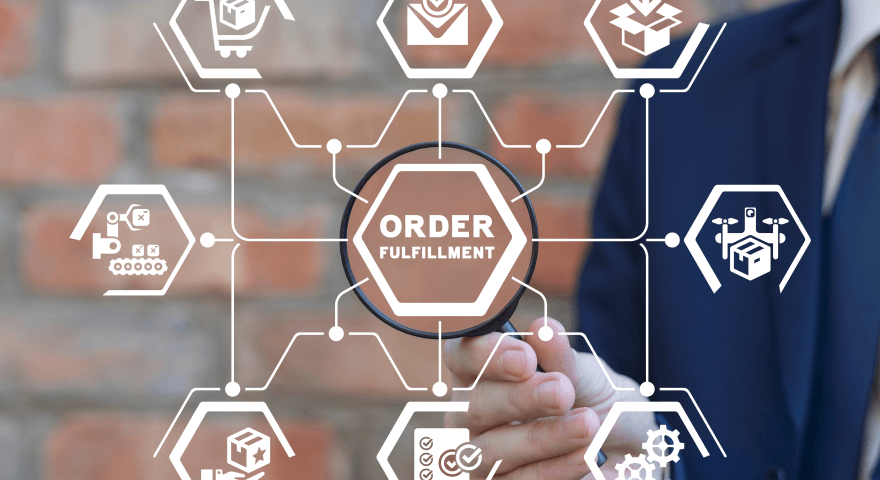AI and ML are the two pillars of the digital revolution, enabling an immense productivity gain, that the corporate world is on the cusp of. Although interchangeably used, it’s important to differentiate: in a nutshell, AI or Artificial Intelligence is the concept of machines to carry out tasks smartly, whereas ML or Machine Learning refers to an application of AI to analyze data, to discover, to recommend, to forecast and to learn from large data sets. The supply chain is one of the primary industrial areas that stand to gain a lot from the successful incorporation and implementation of AI and ML, as showcased in the three use cases for predicting customer behavior, demand forecasting, or avoiding charge-back risks.
Moreover, utilizing AI and ML in the decision-making and execution pipeline can either improve capabilities to seize unexpected market opportunities and shifts or nullify most of the flaws in most supply chains today.
But, are there any obstacles to the broader use of AI and ML in current supply chain systems?
Current supply chain management systems suffer from several limitations and gaps, some of which can often be fatal to the business. These include:
- Most current systems cannot obtain 360-degree visibility of the end-to-end supply chain, wrestling in incomplete data.
- Even if the system manages to capture all possible data, it does not have the processing intelligence to derive the right insights from them.
- Current systems do not have the intelligence to weed out useless data or assess the usability of certain data in specific situations, which makes it inefficient.
- Present systems can often not distinguish between the gravity of different insights. It might highlight a piece of information about something serious that could make or break the business as lightly as another insignificant piece of information.
- The systems in use now are not the state of the art tools when it comes to forecasting and analysis.
- There is no established system of records for decision-making and tracking in order to enable AI to recommend better decisions.
- The supply chain and the connected systems and channels have become far more complex and dynamic, something the legacy systems can no longer keep up with.
However, using the latest technology systems based on closed-loop performance management and leveraging AI and ML for intelligent recommendations can bridge these gaps.
So, how AI And ML can help make better decisions?
Most current analytics and data systems are retrospective, harping on past data and instances to speculate about the future. However, the factors influencing the present and future markets are quite different from the past.
Many new variables are now in the equation while the values and relevance of past ones have drastically changed. A retrospective approach alone no longer cuts it.
The order of the day is the need for precise predictive and prescriptive algorithms that can take every variable and parameter active in the moment and likely to be operative in the future with all available data to provide accurate forecasts and insights.
This will make the basis on which decisions could be made more relevant and meaningful. A facet of this is proved by this 2018 study. To augment decision-making, one needs decision tracking; only this will allow one to improve and learn over time.
Nonetheless, the very nature of AI dictates that it will gather data from all possible sources, process all applicable factors, and use the information so produced to suggest the next step. In the same vein and maybe more realistic with current technology, ML will take into account all applicable data, detect patterns and trends from it, and learn from the same to apply it in future instances. This allows decisions made to have greater potential for success when executed.
What’s the relevance of AI And ML in supply chain management and execution?
Gartner believes that AI and ML are two of the next big things in supply chains. We share this view and expect further automation for routine tasks and the more complex ones that take humans too long to prepare for, process, and implement.
So, on the one hand, for routine tasks, execution times would be reduced drastically due to simple decision-making no longer needing human intervention and tasks becoming automated.
At the same time, for the complex tasks, it will become easier for the executives to make informed decisions that will have greater chances of success, thus reducing the need for long-drawn, time-consuming planning, preparation, and risk management.
Summing up
While AI and ML will assist and improve the work of decision-makers, they will not (yet) lead to full automation. Nothing can replace the human element of decision-making without consequences, as explained in an article on the current state of combining human and artificial intelligence for strategic organizational decision-making.
The best solution thus is a symbiotic relationship between human decision-makers and executives and closed-loop decision-making systems driven by AI and ML for supply chain management.





.jpg)



.png)
